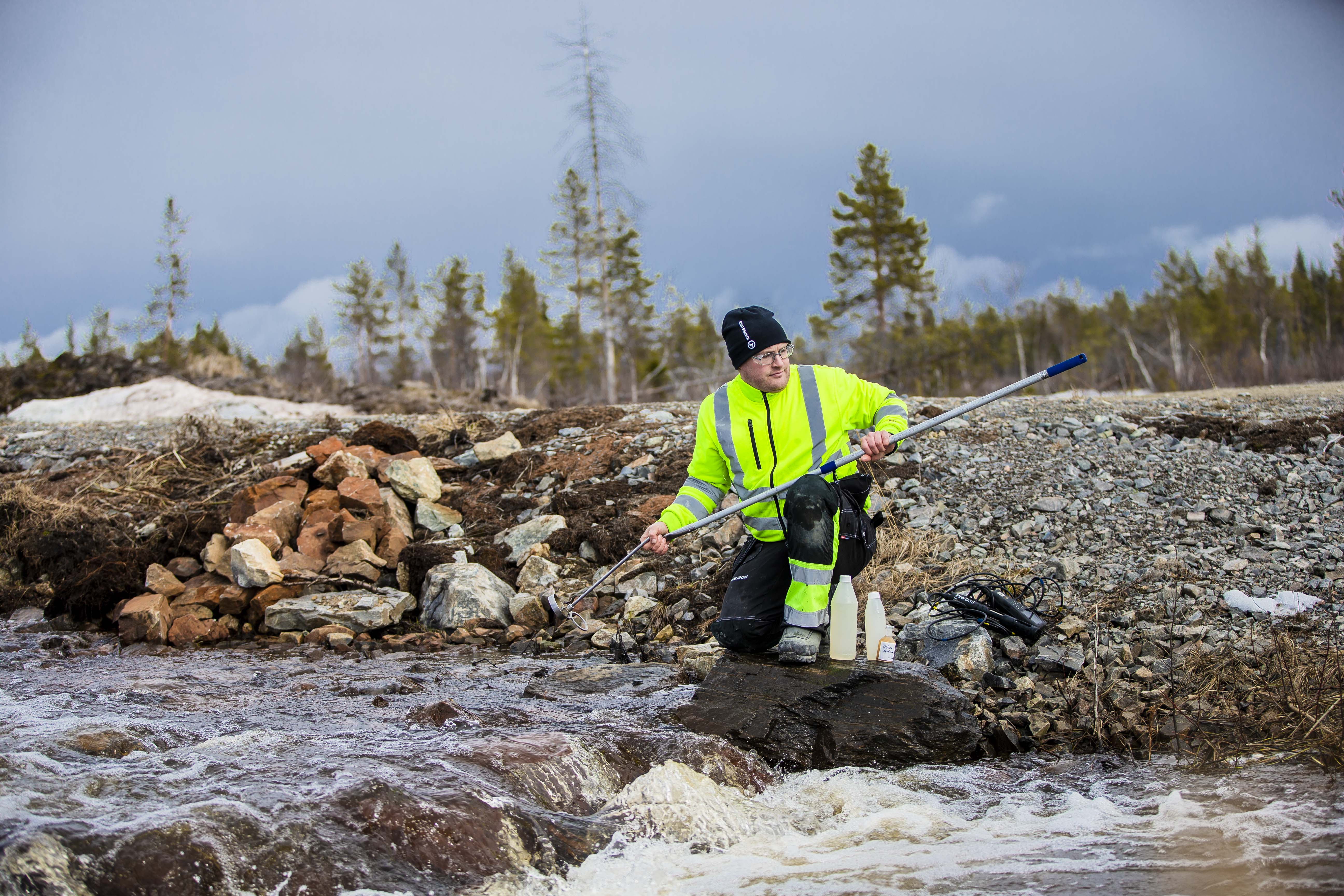Sampling That Protects Both Nature and Operations
10 November 2025, 09:00 CET

In the summer when the interview takes place, it is precisely an intensive period of sampling that is ongoing for Kaunis Iron’s field technicians, all according to the detailed annual schedule that specifies which weeks different samples should be taken. Over the course of a year, more than 5,000 water samples are collected, among many other things.
Mikael Rantakyrö, field technician at Kaunis Iron:
“Right now, we are sampling our groundwater pipes located in the mires around Kaunis and Sahavaara, as well as the sand reservoir, so it’s a lot of walking and trekking. We load our backpacks and head out”.
It’s not just about packing either; the sampling must be carefully planned and prepared.
“We usually start the day before. We make sure we have enough disposable gloves, bottles, pumps, and hoses. We also map out a route so my colleagues know where I am. It’s a safety matter that we don’t compromise on”.
On a normal day, they leave at 07:00 and are out in the field until after lunch, sometimes until 13:00. By 14:00, the day’s samples must be in Kolari to catch the courier transporting them in coolers to the laboratory in Rovaniemi.
“Everything must be quality-assured. Everyone involved in sampling must have licensed training. We must be certified for all types of water sampling. Not just anyone can go out and take the samples”.
Through training, strict routines are maintained, and everyone must understand the risks of contaminating or damaging a sample.
“For example, we use disposable gloves that we change between each sampling site and groundwater pipe to reduce the risk of contamination, but also to protect ourselves from, among other things, cuts. Every sample is handled as an individual, unique entity and must be treated accordingly. If we make mistakes, the entire chain suffers, and so do the results. In a way, we have a control program for the control program itself, you could say. It’s strict, which is necessary to ensure the quality of our work”.
The laboratory analyses are so sensitive that they can detect if anything has gone wrong.
“For instance, if there is an oil spill in the operations from a broken machine, it will show up in the water samples. That’s why all incidents must be reported from the operations so that we can explain what the samples indicate. It’s quality work that affects everyone in our operations.”
The field technicians also inspect the dam, which is done every week of the year, twice a week. No changes are allowed to occur in the dam. The field technicians check pipes drilled into the dam structure to detect any changes.
The year-round work means that Rantakyrö experiences a highly varied working environment.
“I’ve experienced two to three meters of snow at the dam, and it can drift incredibly when the wind blows. In the summer, the mosquitoes make sure you’re never alone, so to speak. But I enjoy the variation that comes from being out in nature.”
He also believes his work is significant, an important part of Kaunis Iron’s overall environmental efforts.
“We have very strict requirements, and those are what we must follow. As long as we stay within these requirements, we should be fine. We meet a lot of people when we’re out in the forests and fields, and they are often very positive about the fact that we are out taking samples”.
On a personal level, Rantakyrö is also actively engaged as a local resident:
“I am both a hunter and a fisherman, so for me it’s important that we protect nature. I don’t want to contribute to harming the environment in any way; I want to contribute to making it better”.
Working Methodology
- The monitoring programs are our way of ensuring we meet the requirements set by environmental permits and legal obligations.
- In what we call the "annual wheel", we break down the monitoring programs into a calendar that shows when different samples are to be collected.
- Planning is done at a detailed level, week by week, clearly outlining who will take the samples and what they are.